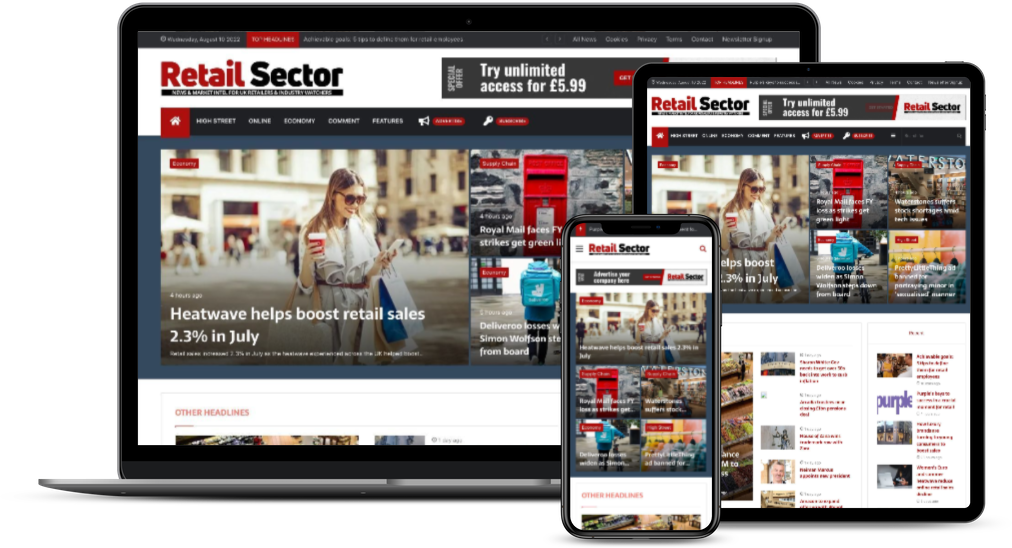How intelligent analytics is transforming retail

Once upon a time, data was a mere afterthought in retail. A ‘nice to have’ that was ineffectually displayed via bar charts and graphs in order to temporarily placate senior execs and stakeholders.
But, as technology evolved, so came the supreme rise of analytics. Retail marketing teams were one of the first to benefit. They now possessed the ability to take raw, previously redundant or misunderstood data, and transform it into powerful business intelligence.
Those that were able to action that business intelligence to drive better campaigns and create more relevant experiences elevated themselves above the competition. Mulberry, Reiss, Calvin Klein – these brands were not competing on price, but on experiences. Experiences that are tailored, personalised and targeted.
Using the power of new techniques like category analytics and insights, an increasing number of retail marketing teams are continuing to use data to elevate their customer experience. Spanning different facets of marketing, here are three examples of intelligent analytics that are transforming how retail brands can reach their customers.
-
Marketing campaigns: Behaviour-based customer segments
The marketing campaign. It’s part and parcel of a retail marketer’s toolkit. For many, delivering a gorgeous creative campaign is the reason many entered the marketing industry in the first place, especially in high-end fashion.
As technology has evolved and our understanding of the customer has become clearer, retail marketing campaigns have become increasingly data-driven – yet some still view data as an unnecessary obstacle that constrains their creativity.
But when the right balance is struck – and data and creative are used in the right places and at the right times during a marketing campaign – the results are inspiring.
Picture a retail brand seeking to make their campaigns more targeted by slicing their customers and prospects into several behaviour-based segments. We all know that in retail, the RFM framework is a popular method for analysing customer value:
Recency – how long ago did the customer make their last purchase?
Frequency – How many times has the customer made purchases?
Monetary – How much has the customer spent with the brand?
When nailed, the RFM method is a highly effective way to build useful and accurate profile of retail customers. However, the real magic happens when these customer segments are used in combination with other metrics – for example, advertising clicks or other campaign engagements.
Say, for example, customers are engaging with a seasonal Instagram campaign – whether through likes, shares, or comments. This data can be combined with RFM metrics to create both a ‘behavioural’ and ‘attitudinal’ view of the customer. Retailers can create dashboards containing these various customer segments, which can be periodically imported into their CRM system. The team can then dynamically match customers with products and offers most suited to their needs – and they can do it in a matter of seconds.
-
Quick wins: Targeted and personalised spot offers
While grand campaigns will often serve as a marketing team’s magnum opus – especially during awards season – their job doesn’t end when the conversions and ROI are in.
For instance, a retail brand could use location-based data to track the weather a customer is currently enjoying (or loathing) and present website visitors with a personalised banner, including their name, that offers a seasonal item of clothing suited to the current climate.
Using their business intelligence platform, the retail brand can build dashboards to surface these customers in real time.
When combined with historical purchases, the marketing team can build a clearer picture on the types of seasonal clothing that customer is likely to buy, along with different styles, colours and fits, and then target them with personalised offers.
Online shopping can often be impulsive, especially when customers are offered a discount price for something that’s solving an immediate problem (such as the British summertime coming to a depressing end). It’s a brand’s ability to react quickly and effectively that ensures their customers are converting on their site, rather than that of a competitor.
-
Affiliate marketing: Managing affiliate partners
Marketing author Bo Bennett famously quoted that “Affiliate marketing has made businesses millions and ordinary people millionaires.”
And he’s not wrong. Affiliate marketing is big business. More than 15% of total digital media ad revenue is attributed to affiliate marketing, with spend on US affiliate activity alone expected to reach a staggering $6.8 bn (£5.4) by 2020.
Applying business analytics to affiliate marketing can result in huge cost savings. Say, for example, a retailer was looking to track the volume and determine the quality of web traffic generated by its affiliates. Being able to track this data over time is vital so the company can negotiate paybacks.
For instance, if a low-traffic affiliate partner suddenly delivers a huge spike in visits, the company will retribute the partner with higher paybacks, and reciprocally.
For many affiliate marketing teams, particularly in retail, the act of unearthing this information is a lengthy and resource-intensive process. Teams will extract the data via a series of SQL queries, use Excel pivot tables to transform it, and present the final set of results with PowerPoint.
Fortunately, technology has now advanced to the stage where business intelligence tools can stitch together automated dashboards that can intelligently showcase the context and dynamics of a company’s cashback affiliates in real-time, on-demand.
The savings generated by reducing the paybacks of lower-volume affiliates are significant. An affiliate partner that suddenly generates an influx in sales will expect to be retributed promptly, and not responding to this quickly means that valuable affiliate partner is likely to up sticks to someone who will.
Jivan Roquet is the founder of business intelligence and marketing analytics platform Aeolia









